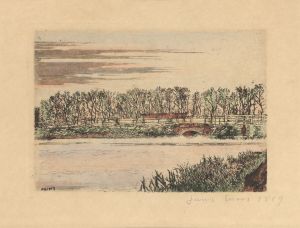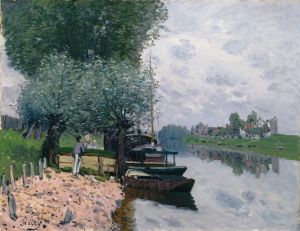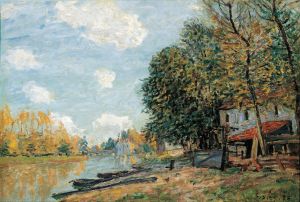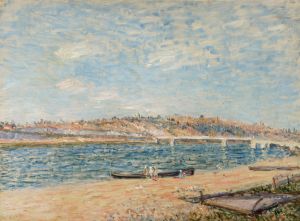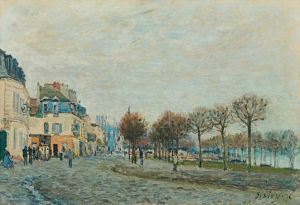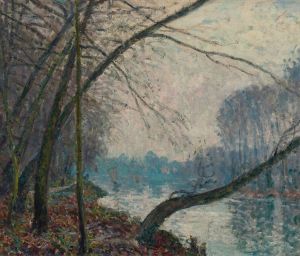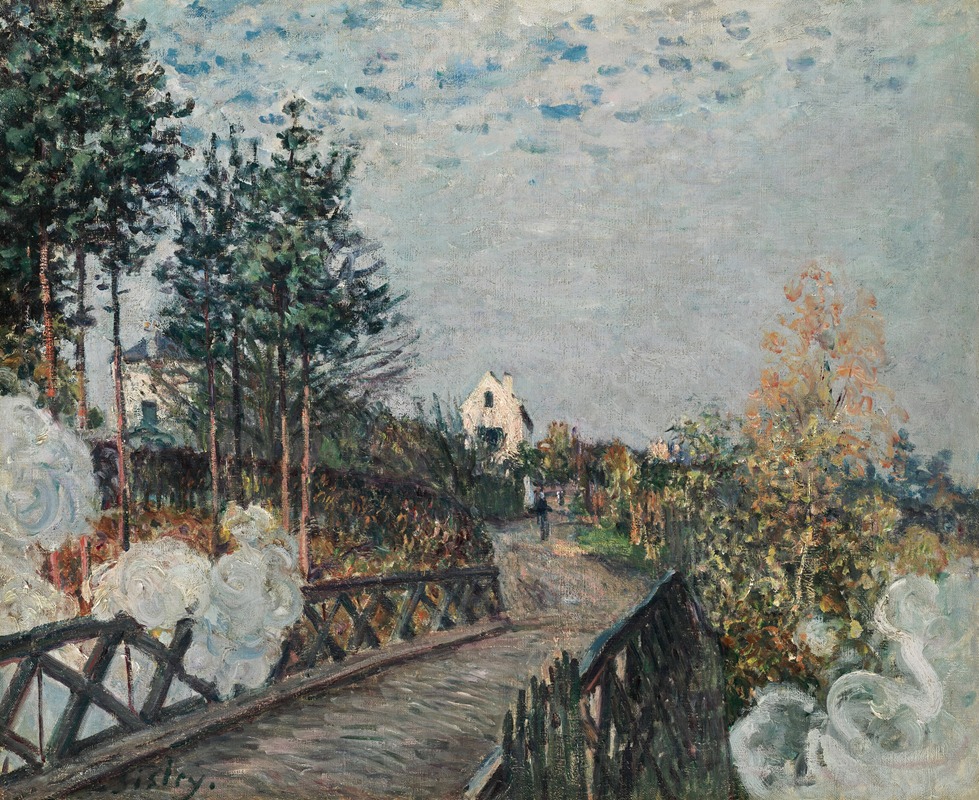
Le pont du chemin de fer
A hand-painted replica of Alfred Sisley’s masterpiece Le pont du chemin de fer, meticulously crafted by professional artists to capture the true essence of the original. Each piece is created with museum-quality canvas and rare mineral pigments, carefully painted by experienced artists with delicate brushstrokes and rich, layered colors to perfectly recreate the texture of the original artwork. Unlike machine-printed reproductions, this hand-painted version brings the painting to life, infused with the artist’s emotions and skill in every stroke. Whether for personal collection or home decoration, it instantly elevates the artistic atmosphere of any space.
"Le pont du chemin de fer" (The Railway Bridge) is a painting by the renowned Impressionist artist Alfred Sisley, completed in 1873. Sisley, a British-born painter who spent most of his life in France, is celebrated for his landscape paintings and his role in the Impressionist movement. This particular work exemplifies his fascination with the effects of light and atmosphere, as well as his interest in modern infrastructure and its integration into the natural environment.
The painting depicts a railway bridge over the River Seine at Argenteuil, a suburban area near Paris that was a popular subject for many Impressionist painters, including Claude Monet and Pierre-Auguste Renoir. The bridge itself is a symbol of the industrial advancements of the 19th century, representing the rapid changes in transportation and technology that were occurring during this period. Sisley captures the bridge with a sense of harmony between the man-made structure and the surrounding natural landscape, a common theme in his work.
In "Le pont du chemin de fer," Sisley employs a soft, muted palette, typical of his style, to convey the serene atmosphere of the scene. The painting is characterized by loose brushwork and a focus on the effects of light on the water and sky, hallmarks of the Impressionist technique. The reflection of the bridge in the water and the play of light across the scene demonstrate Sisley's skill in capturing transient moments and the changing qualities of light.
Sisley's choice of subject matter reflects the Impressionists' interest in contemporary life and their desire to depict modernity in their art. The railway bridge, a relatively new addition to the landscape at the time, is portrayed not as an intrusion but as an integral part of the scene. This approach highlights the Impressionists' innovative perspective on the relationship between nature and technology.
The painting is also notable for its composition. Sisley uses the diagonal lines of the bridge to lead the viewer's eye into the painting, creating a sense of depth and movement. The balance between the horizontal expanse of the river and the vertical elements of the bridge and trees adds to the overall harmony of the composition.
"Le pont du chemin de fer" is an excellent example of Sisley's ability to blend natural and industrial elements in a way that is both aesthetically pleasing and reflective of the changing world around him. His work remains highly regarded for its contribution to the Impressionist movement and its influence on the depiction of modern landscapes.
Today, Alfred Sisley's paintings, including "Le pont du chemin de fer," are celebrated for their beauty and historical significance. They offer a glimpse into the transformative period of the late 19th century and continue to be studied and admired for their artistic innovation and insight into the interplay between nature and human progress.









